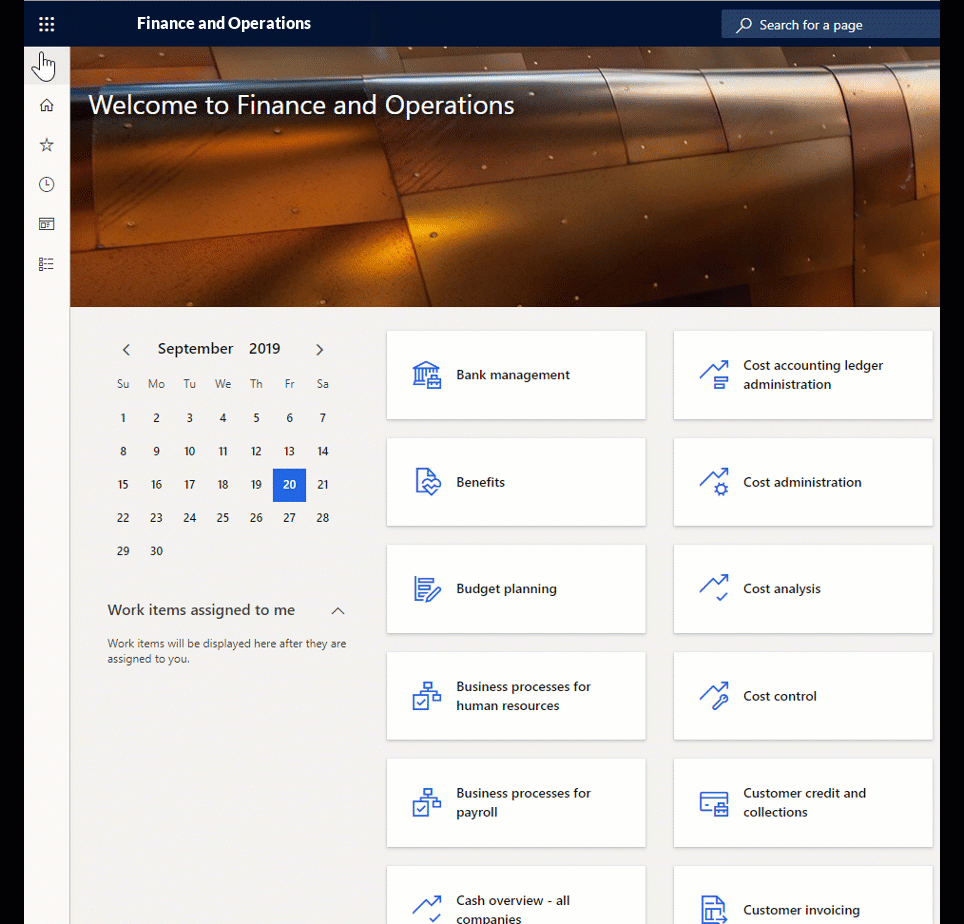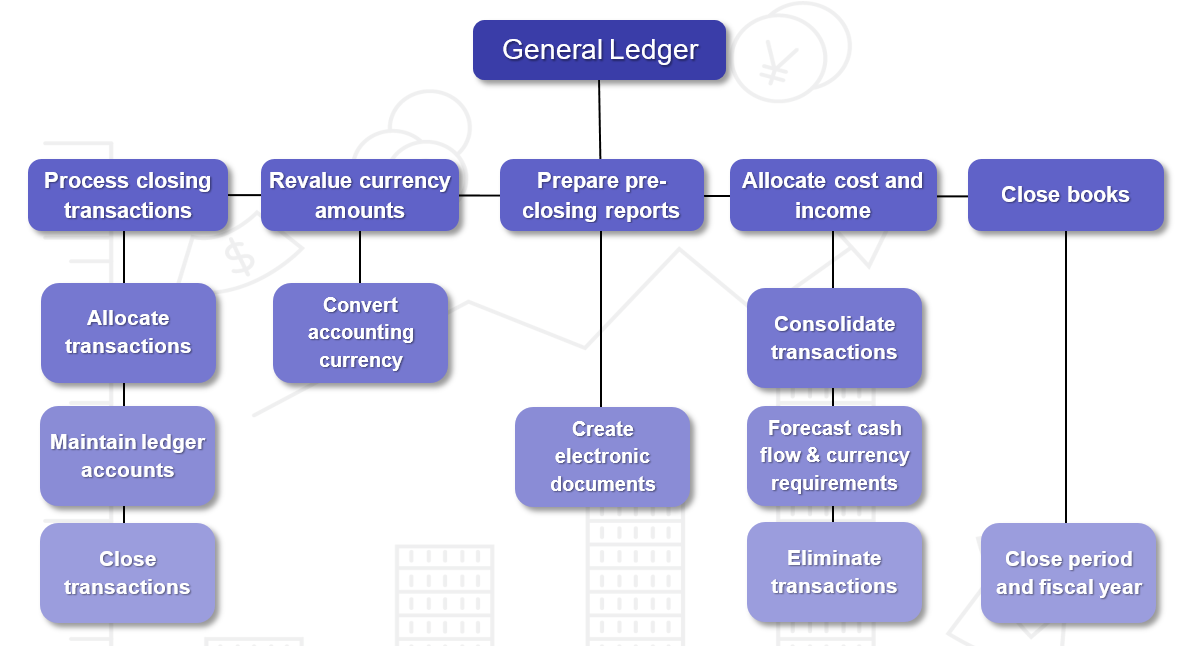General ledger
You can use the General ledger module in Finance to define and manage the legal entity's financial structure. The general ledger is a register of debit and credit entries.

The General ledger module is the center of Finance and records all financial transactions from any other modules.
The following are examples of features in the General ledger module:
Accruals are used in accrual accounting to track revenue that is recognized in the period that it's earned in, not when payment is received, and to track expenses (costs) that are recognized when they occur, not when payment is made.
You can allocate, or distribute, monetary amounts to one or more accounts, or to account and dimension combinations, based on allocation rules. The two types of allocations are fixed and variable. You can also settle transactions between ledger accounts and revalue currency amounts.
At the end of a fiscal year, you must generate closing transactions and prepare your accounts for the next fiscal year. You can use the consolidation functionality to combine the financial results for several subsidiary legal entities into results for a single, consolidated organization. The subsidiaries can be in the same Finance database or in separate databases.
Financial reporting can consolidate multiple companies during report generation. The financial reports that are available out-of-the-box in finance and operations can be run at any time. These reports provide many additional benefits, such as the ability to drill down to all companies and dimensions.
The following figure illustrates the typical processes of the General ledger module in a company.
